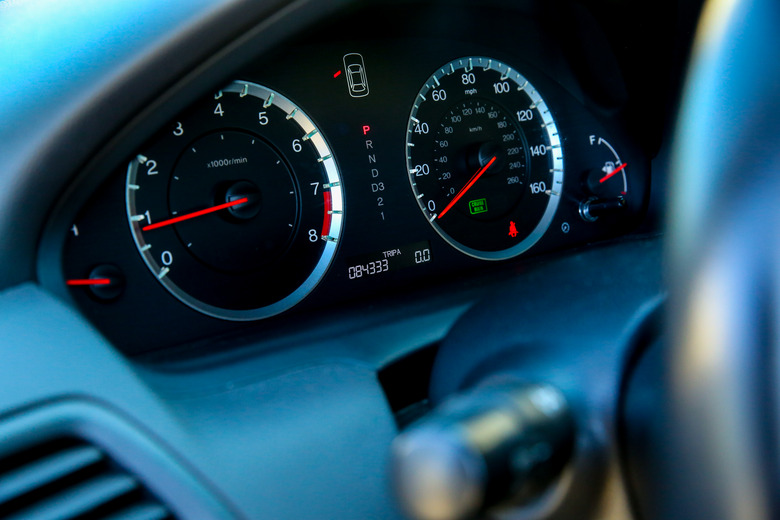How To Prevent Parallax Error
Parallax error occurs when the measurement of an object's length is more or less than the true length because of your eye being positioned at an angle to the measurement markings. For example, a person viewing a car's speedometer from the driver's seat will get an accurate reading because she has a direct line of sight. A person viewing the speedometer from the passenger seat will overestimate the reading because of the angle between his eye, the meter and the arrow.
Step 1
Orient your line of sight directly above the measurement marking on a ruler or similar device so that an imaginary vertical line connects your eye, the marking and the object. Parallax error is primarily caused by viewing the object at an oblique angle with respect to the scale, which makes the object appear to be at a different position on the scale.
Step 2
Place the measurement device on its edge so it is level with the object being measured. If the measurement marking is above or below the object, it will magnify any parallax error caused by your line of sight being at an angle with respect to the marking.
Step 3
Seek out the finest possible edge of the measurement device, or use a device with finer edges. A wider edge allows for a larger parallax error because the object could be higher or lower with respect to the true measurement marking.
Step 4
Place your eye at the level of the appropriate measurement marking when measuring the level of a liquid in a graduated cylinder. Read the lower part of the curved surface of the liquid — the meniscus — to gain an accurate measurement and avoid parallax errors.
Step 5
Ask other people to take measurements. Because parallax error is a type of random error, you can average multiple readings taken by different people to cancel out most of the parallax angle. It is likely that some readings will have positive parallax error and others will have negative error. The average of these readings will be closer to the true measurement.
Cite This Article
MLA
Wallulis, Karl. "How To Prevent Parallax Error" sciencing.com, https://www.sciencing.com/prevent-parallax-error-10000073/. 30 April 2018.
APA
Wallulis, Karl. (2018, April 30). How To Prevent Parallax Error. sciencing.com. Retrieved from https://www.sciencing.com/prevent-parallax-error-10000073/
Chicago
Wallulis, Karl. How To Prevent Parallax Error last modified March 24, 2022. https://www.sciencing.com/prevent-parallax-error-10000073/
